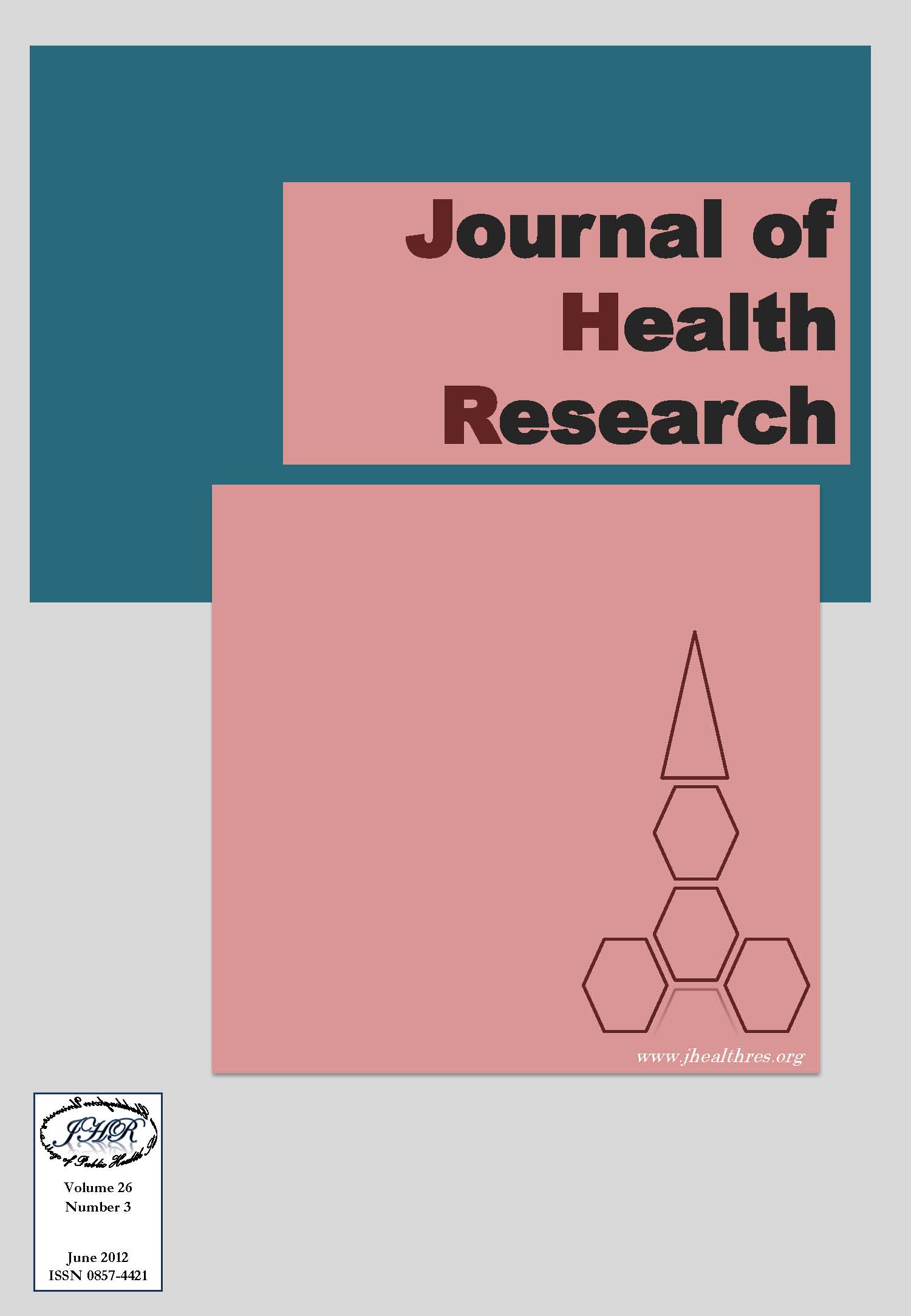Sociodemographic and Environmental Characteristics, and Potential Health Risks, of Scavengers in Open Municipal Dump Sites in Nakhon Ratchasima Province, Thailand
Keywords:
Municipal Solid Waste (MSW), Scavenger, Behavioral Risk, Health Impact, Waste Composition, Nakhon Ratchasima provinceAbstract
Despite increased efforts to prevent, reduce, and recycle waste, the appropriate management of municipal solid waste (MSW) remains a major environmental health issue. The present study investigated the demographic characteristics, physical environments, health risk behaviors, and the health situation of local scavengers in open dump sites at Nakhon Ratchasima province, northeastern Thailand. Behavioral and health information was obtained from 121 randomly selected dump sited scavengers. A standardized preset questionnaire was developed and face to face interview was carried out to collect the information. Work characteristics and physical environmental characteristics were recorded on observation forms. Municipal solid waste (MSW) composition was measured and calculated. Scavengers were 52% male and 48% female, and the average age was 41 years. Most of them had been scavengers for more than 9 years and had little education, ranging from uneducated to primary level. They worked 6-8 hours/day, 5-7 days/week, with an average income of 262 Baht/day (about $8.50 US/day). Some scavengers used personal protective equipment (PPE) such as gloves, hats, shoes, long-sleeve shirt, and long pants. However, they rarely cleaned hands or body after working. Most of them consumed food and drinking water at the dump sites. 36% reported injuries or accidents at the dump site in the past year. Some physical symptoms such as headache, muscle pain and exhaustion were reported from the scavengers. They even did not report about their severe illness. About 47% of them smoked and did not do exercise. Although many health facilities were provided by Ministry of Public Health in the nearby health centers, only 29% of them had done annual medical checkups. Most scavengers were regularly exposed to poor ventilation, dusty conditions, bad odors, high temperatures, and direct contact with disease-causing animals.







